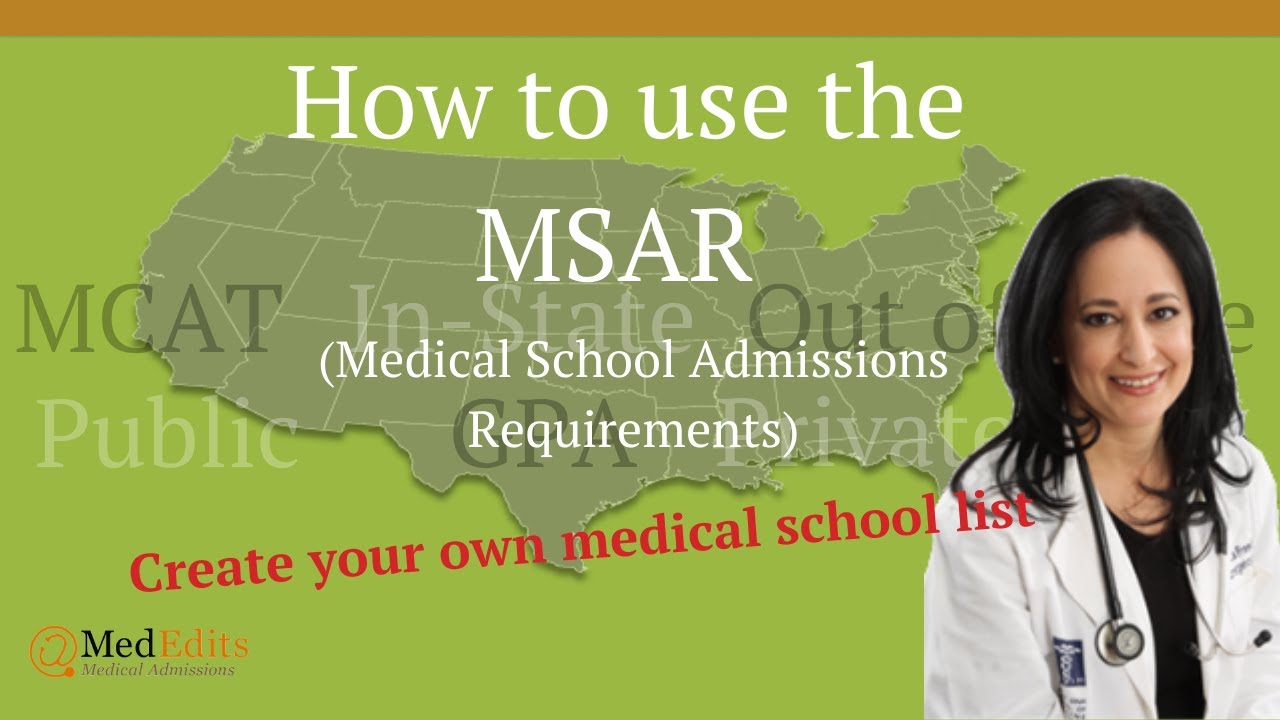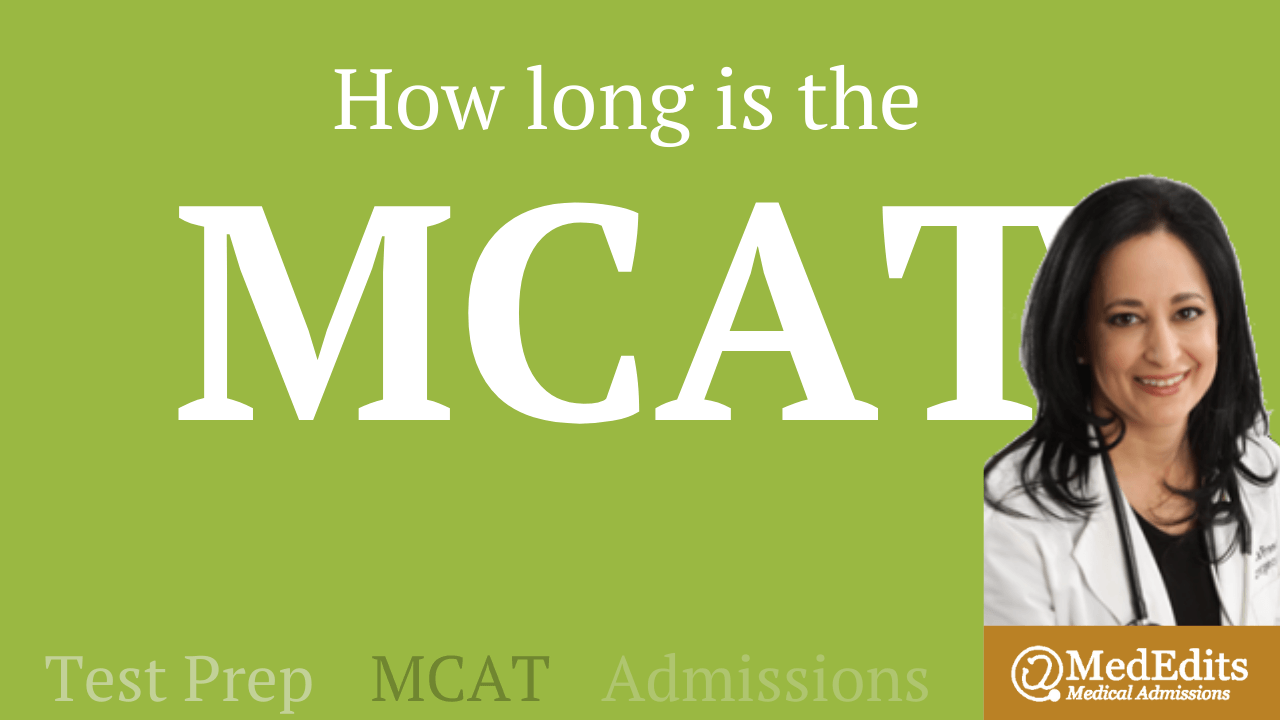4 min read
The MSAR: How and why to use it when applying to medical school (2024)

The MSAR: How and why to use it when applying to medical school (2024)
The best tool you have when deciding where to apply to medical school is the Medical School Admissions Requirements (MSAR), an online resource updated by the Association of American Medical Colleges annually.
The MSAR offers data for allopathic medical schools only!
One of the biggest mistakes students make when applying to medical school is not creating a smart school list. The MSAR (updated for 2024) is an unbeatable resource with a wealth of information. Anyone applying to medical school in the near future should have access.
In addition to our internal data, MSAR is MedEdits go-to resource when advising our students.
If you are you wondering:
- Where should I apply to medical school?
- How many medical schools should I apply to?
- Does my dream school require me to take any humanities courses?
- What is the average MCAT for my dream school?
- Can I get in to my dream school as an out of state student?
The MSAR has the answers!
While applying to medical schools can be a daunting proposition, the good news is that there are a number of economical resources to help you answer these questions on your journey.
The MSARexists to help students better understand the admissions process and help them choose those medical schools to which they should apply.
The MSAR offers various tools so students research medical schools and determine where to apply. A sweeping database, the MSAR boasts a profile page for every MD-issuing school in the U.S. and Canada.
Along with an overview of each institution, the resource includes information on admissions stats such as average MCAT and GPA for every medical school, acceptance rates, education and research, and campus life.
Additionally, the database specifies medical school cost and tuition and offers data on available aid.
The goal is to allow students to compare different medical schools and choose where they want to apply.
How to Search for Medical Schools
While the MSAR is an invaluable tool in medical school admissions, students can’t make the most of this database until they learn how to use it properly.
The homepage is a good place to start, as it allows users to search for individual schools. Students can look up schools alphabetically by name or sort them based on factors like average GPA and MCAT scores.
The filter feature allows prospective med school students to personalize their search results. The database lets users find schools based on a number of factors, including location, public/private designation, class size, and degrees available. Additionally, students can find schools based on median MCAT and GPA scores, campus type, and even class size.
MSAR: Prerequisites, Extracurriculars and Metrics
Once users understand how the homepage works, they can access the following information for each institution:
- Overview: When using the MSAR, a school’s overview section is a good place to start. Expect to find general information about the intuitions, including mission statements, social media profiles, and contact information
- School-Specific Admissions Requirements: Another key aspect of the school profile, the admissions section provides detailed information about application requirements, including medical school prerequisites, MCAT scores, what extracurriculars accepted students have, and letters of recommendation requirements.
- Average MCAT and GPA for each medical school broken up for in state and out of state students
- Residency Placement
- Interview Information: Additionally, the admissions section will offer details on the medical school interview process and whether interviews are MMI, traditional, virtual or in person, including whether they’re conducted in person or virtually, and relay important application dates and deadlines.
- Recommended Courses: It’s no secret that medical schools encourage students to pursue certain coursework prior to applying. One of the best reasons to use the MSAR is that the database includes both required and recommended coursework for admission. If you utilize the MSAR early in the application process, you may have time to sign up for additional classes to make yourself a more desirable candidate.
- Education and research: Students are unlikely to attend a school that doesn’t offer the desired academic opportunities. One of the benefits of using the MSAR is that it allows students to learn about the curriculum and research opportunities at their target schools. You can also view the school’s resources page to learn about activities available outside the classroom.
- Tuition, aid and debt: For most students, cost is a significant factor when it comes to selecting a medical school. The MSAR includes a section on tuition and aid to give applicants an idea of how much financial support they can expect. Additionally, the section offers details on the average amount of debt a student can expect to have upon graduation.
- Campus life: You’ll be spending a significant amount of time in medical school, so it’s only logical to choose an institution that offers a desirable campus life along with the required academics. This section of the MSAR provides information on housing, student support systems, extracurriculars, and diversity programming. The goal is to help you choose a school where you’ll be happy and comfortable.
It’s worth noting that many schools provide data on their applicants. For example, they might share how many students applied in a given year versus how many were granted interviews. Schools may also opt to share details on the average GPA, MCAT, and extracurricular activities of their first-year students. In some cases, schools will relay information about their waitlist process, including the number of students put on the list in the previous application cycle.
Related: MSAR Video Tutorial
Related: Medical School Average GPA & MCAT, Admissions Statistics and Acceptance Rates.
Why Use the MSAR to Find a Medical School
There are various reasons that using the MSAR can benefit students on their medical school journey. One of the biggest advantages of the search engine is that it helps applicants identify schools they might not have known about. For example, if you live in the Pacific Northwest, you might not be familiar with all the schools in the Midwest or Northeast.
Moreover, the database can help applicants seeking specific medical school opportunities or experiences. If you know you want to attend school in an urban setting, you can easily filter out colleges located in rural parts of the country. Additionally, the MSAR is useful in finding schools with less common features, such as particular dual degree options.
The faster you winnow down your medical school list, the more time you’ll have to concentrate on individual applications. The end result is that you’ll (hopefully) have a better shot of getting into your dream school.
Register for the MSAR
The good news is that registering for the MSAR is simple and fast. To access the database, start by creating an account on the AAMC website. At this time, you will need to enter your contact information, username, and password, and answer a series of questions about your current academic status.
After setting up your profile, you will receive a confirmation email from the AAMC. At this point, you will be able to use the database.
It’s worth noting that all MSAR users can view general medical school information, including degree offerings, tuition rates, and application deadlines. However, subscribers enjoy access to additional features, such as admissions criteria and more expansive school profiles.
How much does MSAR Cost?
You can purchase a virtual one-year MSAR subscription for a cost of $28.
Alternatively, you can buy a subscription lasting two years for $36.
About MedEdits
MedEdits helps students get admitted to medical school and residency programs. Our consultants have years of experience serving on medical school admissions committees, and as faculty members at the top medical schools in the country.
Need Help With Finding the Right Medical School?
Schedule a Free 15 Minute Consultation with a MedEdits expert.
Schedule Your Consultation/about_mega.jpg)
Jessica Freedman MD
JESSICA FREEDMAN, M.D., a former medical school and residency admissions officer at the Icahn School of Medicine at Mount Sinai, is the founder and chair of MedEdits Medical Admissions and author of three top-selling books about the medical admissions process that you can find on Amazon.

Finding the Best MCAT Tutor
Finding the Best MCAT Tutor Guest Blogger: MedEdits’ Lead MCAT tutor, Garrick

2025-2026 AMCAS Work & Activities Section (With Examples): The Ultimate Guide
Introduction
/about_mega.jpg?width=500&height=500&name=about_mega.jpg)
